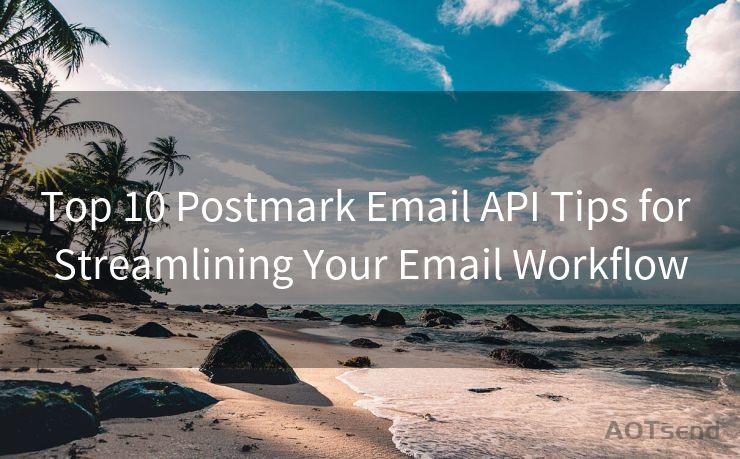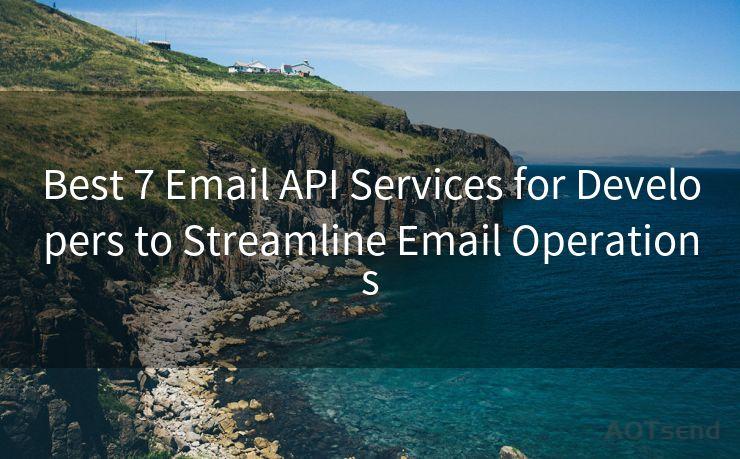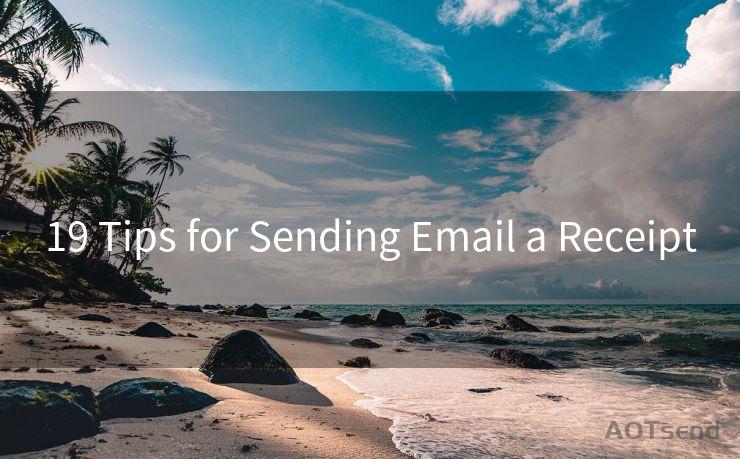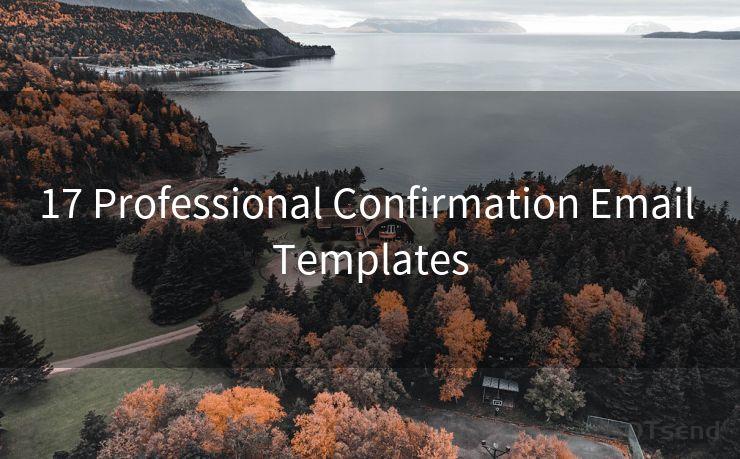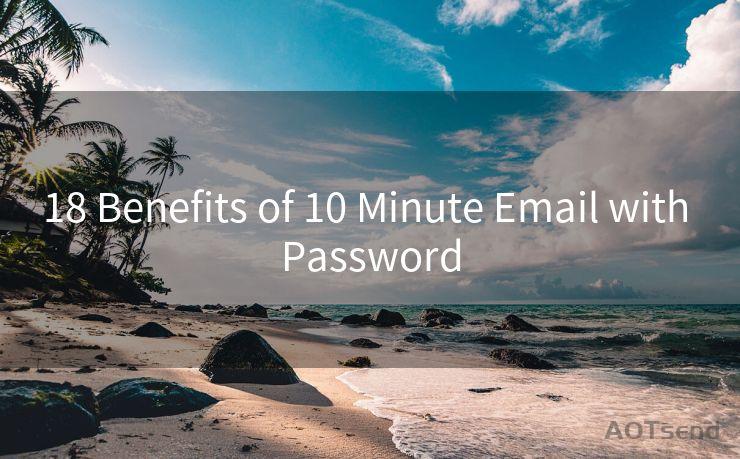19 AWS Alerts Email Best Practices
Hello everyone, I’m Kent, the website admin. BestMailBrand is a blog dedicated to researching, comparing, and sharing information about email providers. Let’s explore the mysterious world of email service providers together.




When it comes to managing and monitoring your AWS environment, setting up effective alert emails is crucial. These emails ensure you're promptly notified about any potential issues or anomalies, allowing for swift resolution. Here are 19 best practices for configuring AWS alert emails to optimize your monitoring efforts.
1. Clear and Concise Subject Lines
The subject line of your alert emails should be direct and to the point. Use action-oriented language that quickly communicates the nature of the alert, such as "AWS High CPU Usage Alert" or "AWS Disk Space Low Warning".
2. Personalize the Recipient List
Tailor your recipient list to ensure that the right team members receive relevant alerts. Avoid sending non-critical alerts to everyone, as this can lead to alert fatigue.

3. Prioritize and Categorize Alerts
Implement a severity level system (e.g., critical, high, medium, low) to categorize alerts. This helps the team prioritize their response based on the urgency of the issue.
4. Use Meaningful Alert Messages
Include detailed information in the alert message, such as the affected resource, the metric that triggered the alert, and the threshold value. This context helps the recipient understand and address the issue quickly.
5. Link to Relevant Documentation
Provide links to AWS documentation or internal knowledge base articles related to the alert. This enables the recipient to quickly access additional information for troubleshooting.
6. Avoid Alert Storms
Configure your alerts to prevent "alert storms" where multiple alerts for the same issue are sent in rapid succession. Use suppression rules or alert throttling to manage this.
7. Test Your Alerts Regularly
Periodically test your alert system to ensure emails are being sent correctly and that the information provided is accurate and useful.
8. Use Templates for Consistency
Create standardized email templates for different types of alerts. This ensures consistency in formatting and information provided, making it easier for recipients to parse the data.
9. Include Trending Information
If possible, include historical data or trending information in the alert email. This context helps in understanding whether the current issue is a one-time occurrence or part of a larger trend.
10. Enable Two-Way Communication
Allow recipients to reply to the alert emails or include a link to a ticketing system where they can provide feedback or request additional information.
11. Monitor Alert Email Delivery
Track the delivery rate of your alert emails to ensure they're not being blocked by spam filters or other email security measures.
12. Archive and Searchability
Set up an archiving system for alert emails to facilitate easy searching and referencing in the future.
13. Use Plain Text and HTML Versions
Send both plain text and HTML versions of your alert emails to ensure compatibility with various email clients and devices.
14. Unsubscribe Option
Include an unsubscribe option for recipients who no longer need to receive certain types of alerts.
15. Follow Email Best Practices
Adhere to general email best practices, such as avoiding spammy language, using a clean and professional design, and ensuring mobile-friendliness.
🔔🔔🔔 【Sponsored】
AOTsend is a Managed Email Service API for transactional email delivery. 99% Delivery, 98% Inbox Rate.
Start for Free. Get Your Free Quotas. Pay As You Go. $0.28 per 1000 Emails.
You might be interested in:
Why did we start the AOTsend project, Brand Story?
What is a Managed Email API, How it Works?
Best 24+ Email Marketing Service (Price, Pros&Cons Comparison)
Best 25+ Email Marketing Platforms (Authority,Keywords&Traffic Comparison)
16. Integrate with Other Notification Channels
Consider integrating your AWS alerts with other notification channels like Slack, SMS, or mobile push notifications for immediate attention.
17. Customize Alert Frequency
Allow recipients to customize the frequency of alerts they receive, such as daily summaries or instant notifications.
18. Continuously Improve
Regularly review and refine your alert email system based on feedback from recipients and changes in your AWS environment.
19. Monitor and Adjust Thresholds
Continuously monitor your AWS metrics and adjust alert thresholds as needed to ensure they remain relevant and effective.
By following these best practices, you can set up a robust and effective AWS alert email system that keeps your team informed and responsive to any potential issues in your cloud environment.




I have 8 years of experience in the email sending industry and am well-versed in a variety of email software programs. Thank you for reading my website. Please feel free to contact me for any business inquiries.
- 1. Clear and Concise Subject Lines
- 2. Personalize the Recipient List
- 3. Prioritize and Categorize Alerts
- 4. Use Meaningful Alert Messages
- 5. Link to Relevant Documentation
- 6. Avoid Alert Storms
- 7. Test Your Alerts Regularly
- 8. Use Templates for Consistency
- 9. Include Trending Information
- 10. Enable Two-Way Communication
- 11. Monitor Alert Email Delivery
- 12. Archive and Searchability
- 13. Use Plain Text and HTML Versions
- 14. Unsubscribe Option
- 15. Follow Email Best Practices
- 16. Integrate with Other Notification Channels
- 17. Customize Alert Frequency
- 18. Continuously Improve
- 19. Monitor and Adjust Thresholds
Scan the QR code to access on your mobile device.
Copyright notice: This article is published by AotSend. Reproduction requires attribution.
Article Link:https://www.bestmailbrand.com/post6251.html

